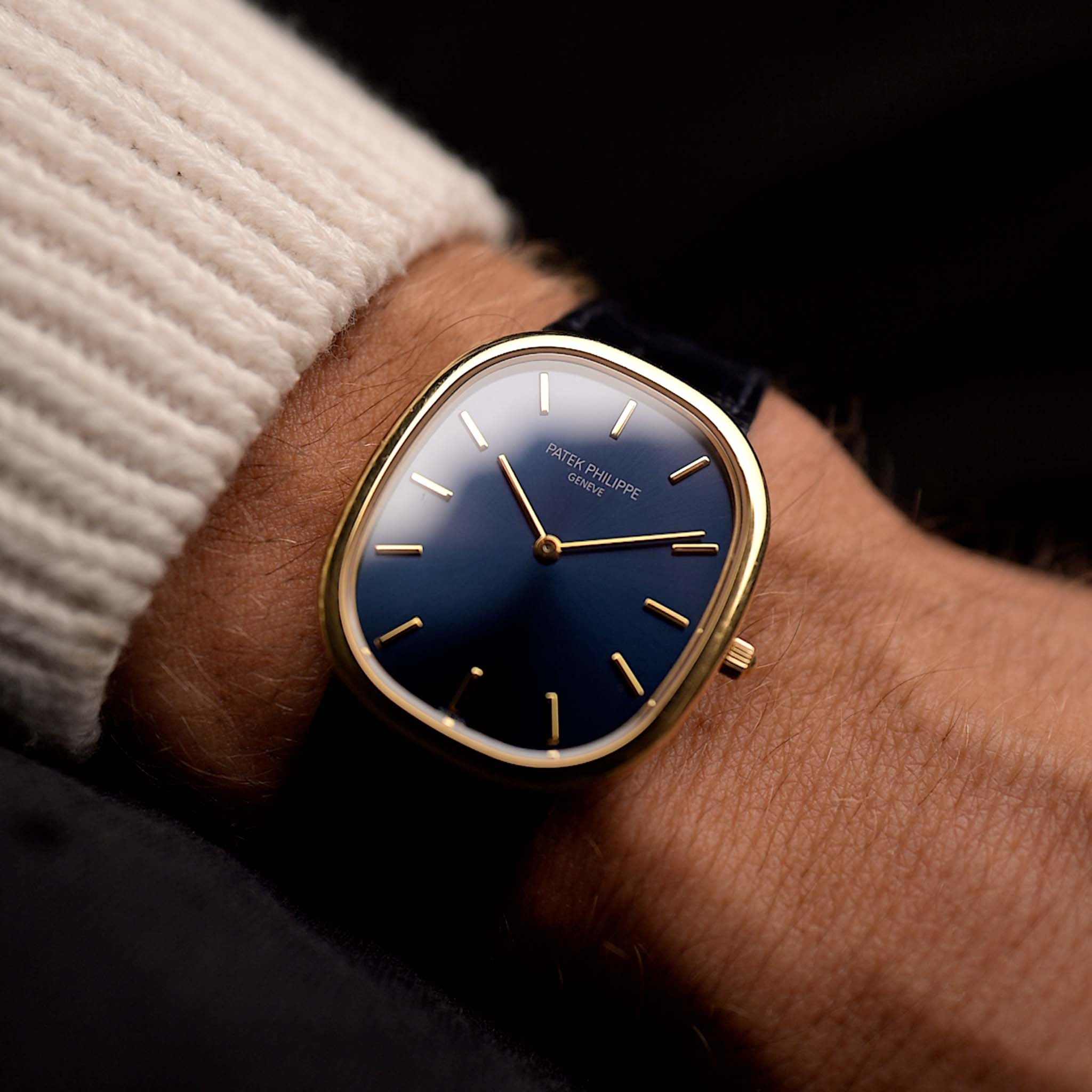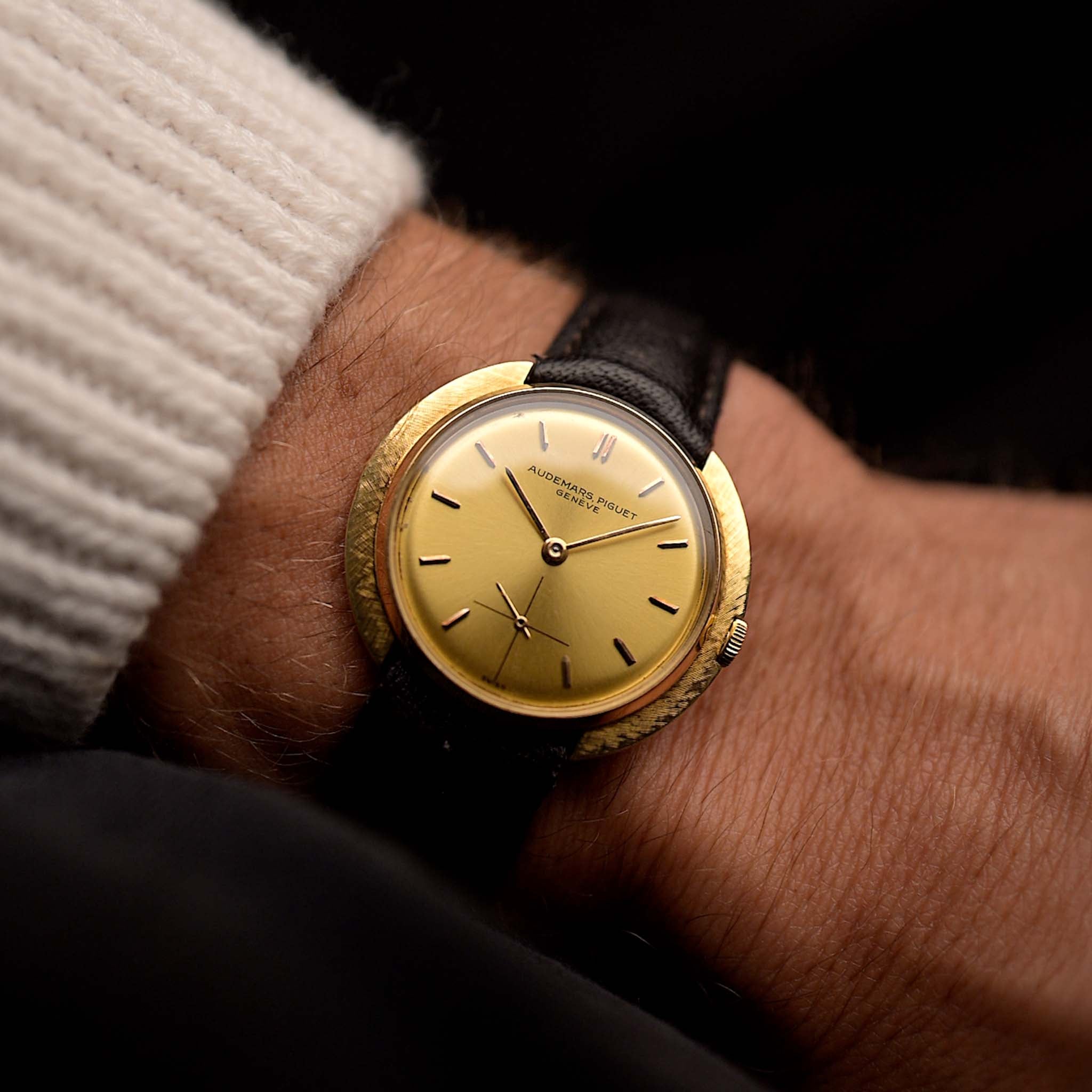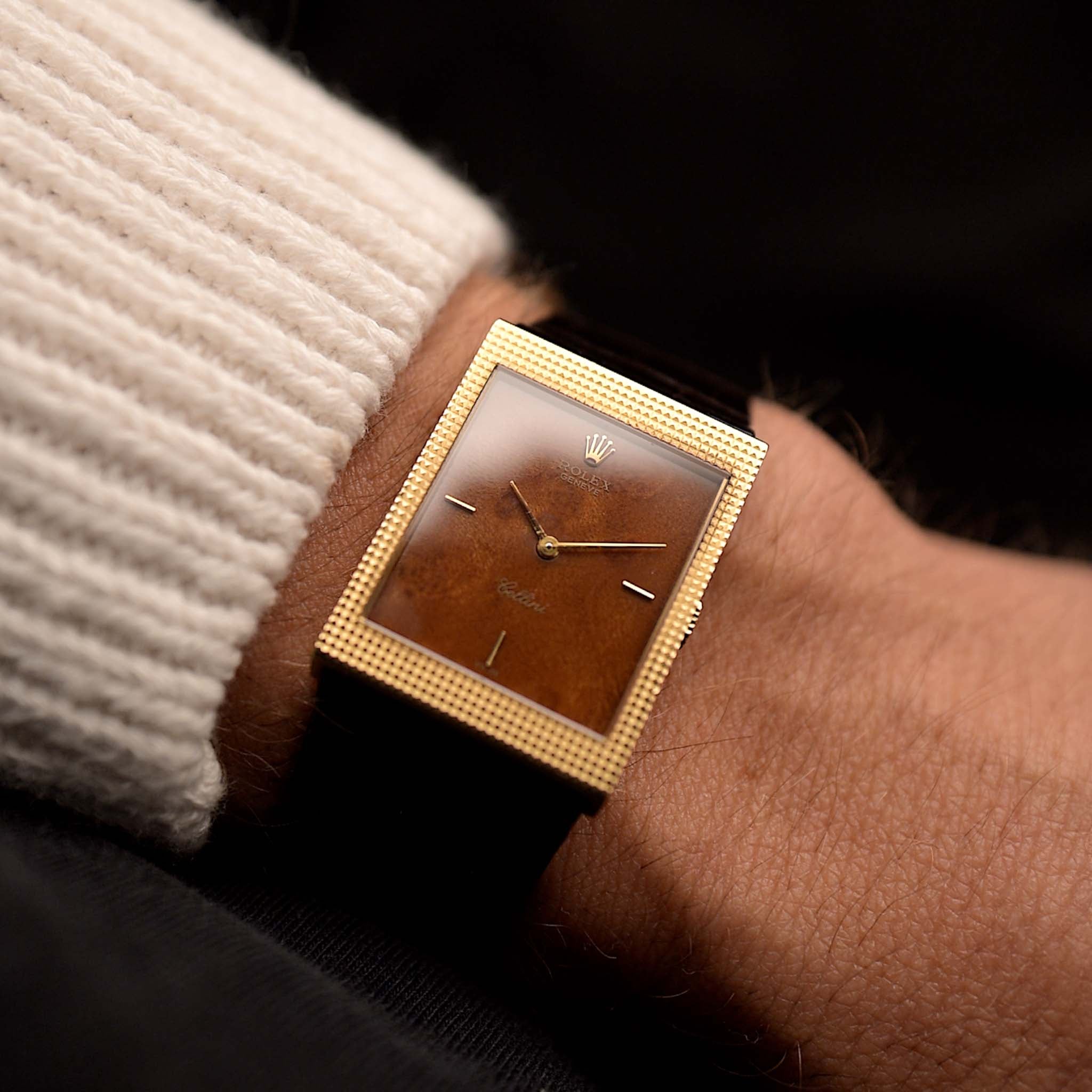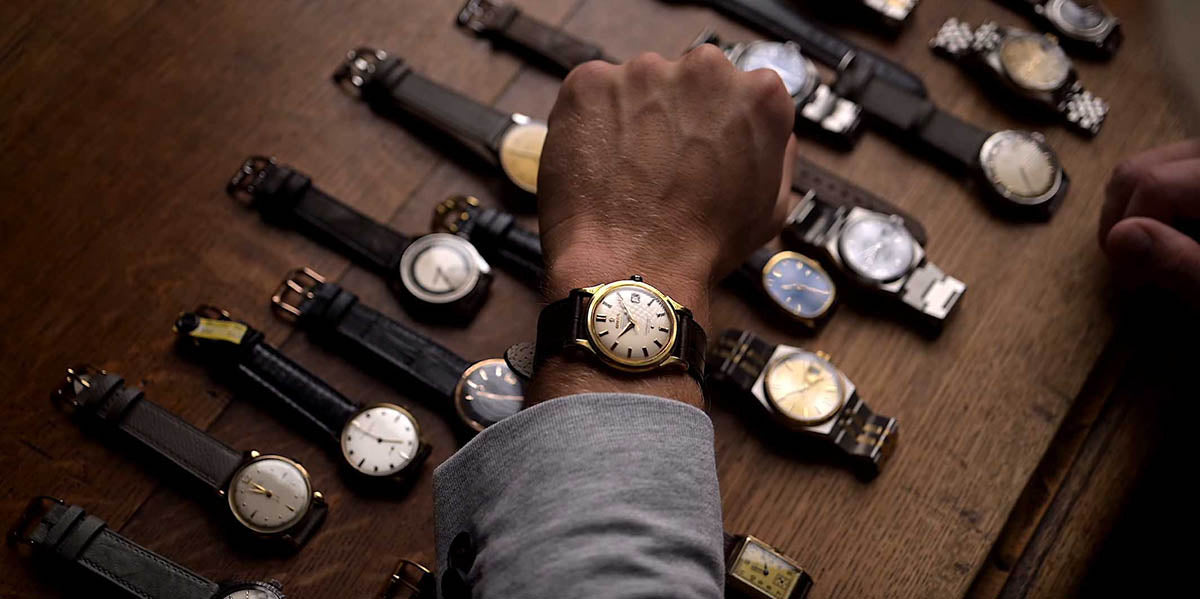Jaeger-LeCoultre is a brand of technological innovation. Its first automatic marvel came with the Calibre 481 in 1948. Now what's interesting about the 481? It introduced a completely new complication: the power-reserve indication. Similarly, the Cal.497 came with a design revolution in itself. Not only is the Cal497 more accurate, it enabled a completely new design language, a two-hand watch with two registers for power-reserve and second-hand and without a visible crown - that was put to the case-back.
April 19, 2022
Jaeger-LeCoultre, Automatic Movements & the Power-Reserve
 Marcus Siems @siemswatches
Marcus Siems @siemswatches
Collector, Author, Data Analyst
Let’s talk about watch movements for a second, particularly the automatic winding system and the role Jaeger-LeCoultre played in its success.
The invention of the first serially produced automatic movement dates back to 1923 when English watchmaker John Harwood patented his first bumper-style movement without winding crown[1-4], a watch that was first produced in 1926 and further in corporation with Blancpain in 1928. Unfortunately this first try yielded only a moderate 8 hours of power-reserve. A little later in 1931 Rolex then introduced their idea of an automatic movement with the Perpetual movement, the first with a 360° oscillating weight and already more than 30 hours of power reserve.
 Figure 5. Distribution of watch movements between 1940-2000[5].
Figure 5. Distribution of watch movements between 1940-2000[5].
But these technological advances did not reach the mass market yet. Around 1940 only about 8% of the watches were “automatic”. It was still a novelty in its baby shoes. Well, and partially due to the very strict patent Rolex held on the full-rotor movement[10]. However, all of this would change quickly and about 15 years later we can see that there were already as many automatic as manually wound watches on the market.
 A small window at 12 o'clock showing you a second time - the lifetime of your mainspring. Photo @goldammer.me
A small window at 12 o'clock showing you a second time - the lifetime of your mainspring. Photo @goldammer.me
But what has this to do with Jaeger-LeCoultre? The brand was a bit late to the party but introduced their first “bumper” automatic movement - the Calibre 476 - in 1946[6]. And the updated Calibre 481 followed just two years later[2,7]. Now the interesting point is that the Cal481 wasn’t a mere upgrade, it introduced a completely new complication: the power-reserve indication.
Positioned at 12 o’clock a rotating disk displayed the remaining hours of power reserve and defined a new collection for Jaeger-LeCoultre, the Powermatic. Because an automatic watch winds infinitely this was the first time people could know about the remaining power left in the mainspring[8]. Something that came just natural with manually wound timepieces.
 The iconic and unique design of the Futurematic: Power-reserve at 9 o'clock, sub-second at 3 o'clock and the crown at the case-back - the ultimate symmetry. Photo @goldammer.me
The iconic and unique design of the Futurematic: Power-reserve at 9 o'clock, sub-second at 3 o'clock and the crown at the case-back - the ultimate symmetry. Photo @goldammer.me
The caliber 481 was in production until 1959 but this complication would change the face of many JLC watches up until today. Further building on their success Jaeger-LeCoultre refined the movement and introduced the Calibre 497 in 1951[2,9]. And with the new movement came a design revolution of the brand.
Not only was the Cal497 more accurate, it enabled a completely new design language, a two-hand watch with two registers for power-reserve and second-hand and without a visible crown - that was put to the case-back. Now does that ring a bell? It’s the Futurematic that was created from this movement, the ultimate watch for the symmetry lovers.
 Figure 6. Distribution of the Powermatic (dashed) and Futurematic (solid) popularity on the European (JLC, blue) and US (LeCoultre, red) markets between 1940-1975. Caveat: On E-Commerce platforms people sometimes estimate the age of a watch and tend to round them to complete tens or fives if in doubt. Thus, a watch from 1948 might be set to 1940 or 1945.
Figure 6. Distribution of the Powermatic (dashed) and Futurematic (solid) popularity on the European (JLC, blue) and US (LeCoultre, red) markets between 1940-1975. Caveat: On E-Commerce platforms people sometimes estimate the age of a watch and tend to round them to complete tens or fives if in doubt. Thus, a watch from 1948 might be set to 1940 or 1945.
Quite surprisingly the success-story of this pivotal complication began overseas. We can clearly see that the Powermatic is far more common in the US and also peaks a good five years earlier then in Europe. This brings us back to the question how did Jaeger-LeCoultre treat the overseas market back in the 1940s and 1950s? The US gentlemen definitely liked to sport smaller golden watches but has it been the market for new complications as well?
 Futuristic, stylish, uniquely designed... The perfect watch for the American market. Well, if it'd be golden, too. Photo @goldammer.me
Futuristic, stylish, uniquely designed... The perfect watch for the American market. Well, if it'd be golden, too. Photo @goldammer.me
It might be tempting to think that European brands used the US-market to “test” some of their products. But it is hard to believe that this has been the case in the 1940s and 1950s. Collecting data and the information exchange wasn’t by far as quick as it is today[8].
However, a 5-year popularity head start of the Powermatic possibly speaks for a different trend. It might not be testing but rather meeting the demand of novelty-driven customers. So in the US it was not only about showing a golden watch but also showing that you got the newest watch model as well. A tricky market to suffice.
References
[1] History of Automatic Watches; History of Watch;
http://www.historyofwatch.com/watch-history/history-of-automatic-watch/
[2] An interesting page of JLC History: Automatic watches; Nicolas amanico, WatchProSite;
[3] Jaeger LeCoultre: A Brief History Of The Automatic; Mademoiselle VIP, VIP Services Blog;
http://blog.vipservices.ch/en/238-jaeger-lecoultre-a-brief-history-of-the-automatic/
[4] Rolex Oyster Perpetual: 5 Things to Know; SwissWatchExpo, The Watch Club;
https://www.swisswatchexpo.com/TheWatchClub/2019/03/21/rolex-oyster-perpetual-5-things-to-know/
[5] Watches from Chrono24, extracted 2020 Nov. 29th; Karlsruhe, Germany;
[6] JLC 476; WatchWiki;
https://www.watch-wiki.net/doku.php?id=jlc_476
[7] JLC 481; WatchWiki;
https://www.watch-wiki.net/doku.php?id=jlc_481
[8] Jaeger-LeCoultre and the U.S. market: The Master Mariner Line; Blomman, Blomman Watch Report;
[9] JLC 497; WatchWiki;
https://www.watch-wiki.net/doku.php?id=jlc_497
[10] In-Depth - The Patek Philippe 2526, And Why It's A Watch To Pay Attention To; Ben Clymer, Hodinkee;
https://www.hodinkee.com/articles/the-patek-philippe-2526-and-why-its-a-watch-to-pay-attention-to
All rights on text and graphics reserved to the Author.




























1 comment
Like to see a reverseso watch
Leave a comment